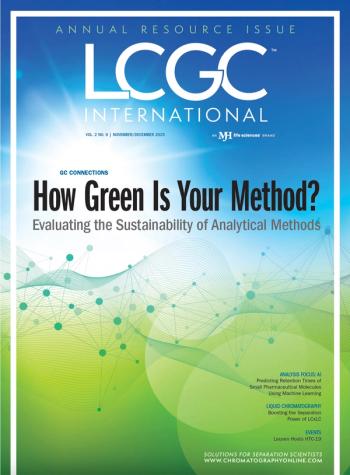
|Articles|August 1, 2011
- LCGC North America-08-01-2011
- Volume 29
- Issue 8
Vol 29 No s8 LCGC North America August 2011 Buyers' Guide & Industry Trends Supplement PDF
Click the title above to open the LCGC North America August 2011 Buyers' Guide & Industry Trends Supplement, Vol 29 No s8, in an interactive PDF format.
Advertisement
Articles in this issue
over 14 years ago
The State of the Art in Chiral Capillary Gas Chromatographyover 14 years ago
How Fast Can a Gradient Be Run?over 14 years ago
Generous Results with MISER Chromatographyover 14 years ago
Vol 29 No 8 LCGC North America August 2011 Regular Issue PDFNewsletter
Join the global community of analytical scientists who trust LCGC for insights on the latest techniques, trends, and expert solutions in chromatography.
Advertisement
Advertisement
Advertisement
Trending on LCGC International
1
HPLC 2025 Revisited: A Year-End Review of LCGC's Conference Coverage Highlights (Part One)
2
A Novel Machine Learning Method for Predicting Retention Time of Small Molecule Pharmaceutical Compounds Across Reversed-phase HPLC Columns
3
Dr. Rigoberto Advincula on Advancing Polymer Research With Py-GC/MS
4
Best of the Week: Career Opportunities for PhD Graduates, Human Expertise and Machine Learning
5



